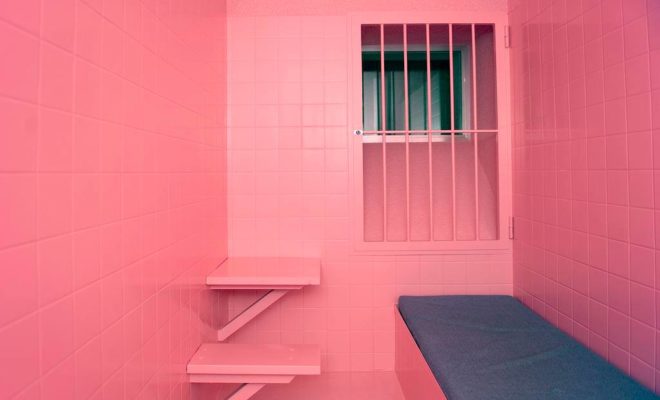Somewhere back in our long Texas family bloodlines, there’s probably a story or two about an uncle, a grandpa, or maybe even an aunt (goodness!) who ended up in the “drunk tank.” Why do we call it that? Generally, that’s the term given for the holding cell in which one would sleep off a drunken stupor, which may or may not have been the cause of said individuals doing some unruly things. Recently, studies have looked into what the color of the drunk tank can do for someone’s mood. Specifically, these studies have investigated the color drunk tank pink and how it may have a calming affect.
Baker-Miller Pink, otherwise known as drunk tank pink, has been made use of for the purpose of calming those in jail cells who may be of a violent or agitated nature. The first doctor to have reported on its affects was Dr. Alexander Schauss, Ph.D. As the Director of the American Institute for Biosocial Research in Tacoma, Washington, he studied the affect this color of pink had on those being held in cells that were coated in it, specifically, its ability to suppress anger and calm antagonistic people. He also identified data with respect to its affects on those who were considered anxiety-ridden. “Even if a person tries to be angry or aggressive in the presence of pink, he can’t. The heart muscles can’t race fast enough. It’s a tranquilizing color that saps your energy. Even the color-blind are tranquilized by pink rooms,” he said.
Video: YouTube/Big Think
Shared on the Big Think YouTube channel, the video above talks about research with respect to “a shade of pink paint that psychologists used to use to paint the inside of jail cells. The prisoners that were put in there — often the most dangerous and the most aggressive prisoners – showed much less aggressive or violent tendencies as a result.” Despite such apparent positive results from being surrounded by the color pink, there also seems to be considerable evidence that its affects are short-lived. As soon as the body finds its equilibrium, further analysis suggests that a prisoner may then go back to a frame of mind which is more agitated. They also indicate a lack of proof that this color affects prisoners any longer than a 15 to 30-minute window. An article on colormatters.com has also indicated that “Color selections made for the holding cells were originally done in the late 1970’s and early 1980’s…They botched the color a bit and made it a kinda hot greyish pink…They didn’t take into account exposure effects. The color was ‘in the ballpark’ enough to give scientifically significant results (blind study). But… Prisoners did respond and calmed down, as hoped, initially. Major goof: If they hung around too long, they became even more violent.” It’s believed that the increase in violent behavior may be directly linked to each individual prisoner’s “uniquely formed, special case linkage.”
What’s the final determination? In the end, each individual appears to be affected differently by color, and the data appears to point to the concept that although drunk tank pink may be initially calming, the way someone feels in the drunk tank is ultimately a result of their own emotional makeup.


